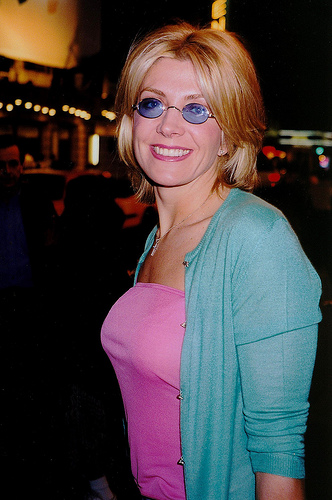
The name Natalie Wood still echoes through the corridors of Hollywood history, not just for her luminous talent and iconic roles, but for the profound and heartbreaking mystery surrounding her untimely death. For more than four decades, the circumstances of her drowning off Santa Catalina Island have fueled relentless speculation, casting a long shadow over her remarkable life and career. It is a narrative steeped in both public intrigue and intensely private sorrow, a dichotomy that her daughter, Natasha Gregson Wagner, has bravely chosen to confront.
Natasha’s journey, chronicled in her memoir and the HBO documentary “Natalie Wood: What Remains Behind,” represents a powerful effort to reframe her mother’s story, shifting the focus from the tragic end to the vibrant life that preceded it. Through intimate conversations with her stepfather, Robert Wagner, and reflections on her own path through grief, Natasha offers a deeply personal account, seeking not just understanding, but a profound sense of acceptance for herself and for her family. Her candid exploration invites us into the heart of a family grappling with an enduring enigma, where love, loss, and the relentless glare of public scrutiny have intertwined for generations.
This article embarks on an in-depth exploration of the initial, deeply personal facets of this enduring Hollywood tragedy, as seen through the eyes of those closest to Natalie Wood. We delve into Natasha’s early struggles with grief, the emotional revelations shared within the family, Robert Wagner’s account of that fateful night, and the starkly different narratives that have emerged from within Natalie Wood’s own kin. These foundational elements lay the groundwork for understanding the complex human drama at the core of a mystery that continues to captivate and confound.
.jpg/440px-Natasha_Gregson_Wagner_(cropped).jpg)
1. **Natasha Gregson Wagner’s Early Grief and Path to Acceptance**Natasha Gregson Wagner was merely 11 years old when her mother, Natalie Wood, tragically passed away by drowning in the Pacific Ocean on November 29, 1981, at the age of 43. This profound and sudden loss left an indelible mark on the young girl, precipitating a journey of grief and acceptance that would span decades.
Reflecting on those horrifying days, Natasha has shared a poignant insight into her coping mechanism, stating, “if I don’t deal with this, it will kill me, so I’m going to deal with it.” This resolve became the cornerstone of her eventual quest for understanding and peace, demonstrating an extraordinary maturity for a child facing such a public and devastating personal trauma.
In her immediate grief, Natasha expressed a deeply personal desire to her two fathers—her biological father, Richard Gregson, whom she affectionately calls “Daddy Gregson,” and her stepfather, Robert Wagner, whom she refers to as “Daddy Wagner.” She told them, “‘I need to go see my mom.’ And they called in a psychiatrist.” This raw need to connect with her mother one last time was an essential part of her initial processing.
Ultimately, it was her “Daddy Gregson” who facilitated this crucial step. “Then my Daddy Gregson took me, and I wrote her a letter and I put it under her hand. That was the first step I took on my walk of acceptance. And from there, I’ve just gone into the heart of it,” the *Urban Legend* star quipped, highlighting the therapeutic power of that intimate farewell.
The public nature of her mother’s death presented a unique challenge to Natasha’s grieving process. “everything that happened was so public, but grief is so private. The truth is I do feel better when I talk about my grief,” she revealed. This sentiment underscores the burden of carrying a private sorrow under the constant gaze of public scrutiny, and her eventual decision to speak out as a path to healing.

2. **Robert Wagner’s “Never Thought I’d Make It” Revelation**Robert Wagner, who lovingly raised Natasha and her sisters Katie Wagner and Courtney Wagner, has expressed profound pride in Natasha’s resilience and her ability to navigate such immense loss. This deep paternal bond forms a crucial backdrop to their shared journey through the aftermath of Natalie Wood’s death.
In a particularly poignant moment recounted by Natasha, Robert Wagner shared a revelation during a therapy session they attended together. “‘I never thought you would make it when your mom died,’ because I was so close to her. And so he’s always blown away that I am totally okay,” Natasha recalled, illustrating the depth of her stepfather’s concern and his admiration for her strength.
This powerful admission from Wagner speaks volumes about the intensity of Natasha’s bond with her mother and the widespread fear that such a loss could irrevocably break an individual. It highlights Wagner’s genuine paternal care and his long-held apprehension about Natasha’s emotional well-being in the wake of the tragedy.
The fact that Robert Wagner confided this to Natasha during a shared therapy session underscores the intimate and trusting relationship they cultivated over the years. It reveals a layer of vulnerability and honesty that is often hidden from public view, offering a glimpse into their private efforts to process collective trauma and support each other.
His enduring sentiment, that he is “proud” of her, reinforces the successful outcome of Natasha’s arduous walk of acceptance. For Wagner, seeing Natasha not just cope but thrive after such a devastating loss is a testament to her strength and a source of deep satisfaction for the man who stepped into the role of her primary caregiver.

3. **The Fateful Night: Robert Wagner’s Account of the Argument and Wood’s Disappearance**In the HBO documentary *Natalie Wood: What Remains Behind*, Robert Wagner provides his firsthand recounting of the fateful night in 1981 when Natalie Wood disappeared from their yacht. His narrative offers a crucial perspective on the events leading up to the tragedy, a story that has been scrutinized for decades.
Wagner states that he, Natalie Wood, and her recent co-star Christopher Walken had returned to their yacht, the Splendour, after having dinner on Catalina Island. The evening, already charged with an underlying tension, escalated into a significant disagreement onboard, a detail often central to the enduring speculation surrounding Wood’s death.
He recalls an argument unfolding between himself and Christopher Walken, centered on Wood’s career choices. Specifically, Wagner contends that the dispute was about Wood “putting her career ahead of her family,” a point of contention that seemingly brought deep-seated issues to the surface between the two men.
In the heat of the moment, Wagner admits to an act of anger, stating that he “smashed a wine bottle.” This admission points to a volatile atmosphere on the yacht, a detail that has always been a point of interest for investigators and the public alike, as it precedes Wood’s disappearance.
Following the argument, Wood reportedly “went below deck to go to bed,” seeking to withdraw from the escalating tension. According to Wagner’s account, this was the last time anyone saw her alive. He subsequently discovered her missing around 1 a.m. and promptly initiated a search, first calling the shore boat and then the Coast Guard. Her body was tragically recovered early the next morning, Sunday, November 29, 1981.

4. **The Theory of Retieing the Dinghy and Accidental Slip**Central to Robert Wagner’s understanding of what transpired that night is his assumption that Natalie Wood ventured out to “retie the dinghy.” This theory offers a plausible, albeit unconfirmed, explanation for why Wood might have been outside the yacht in the early morning hours.
Both Wagner and Natasha Gregson Wagner recall Natalie Wood’s particular aversion to the noise the dinghy made when it would bang against the side of the boat. This seemingly minor detail becomes significant in reconstructing the events, providing a potential motive for Wood to leave the cabin.
Natasha Gregson Wagner elaborates on her mother’s sensitivity, stating, “I remember it used to drive her crazy… because the way the water hit up against the boat, it would bang and she was so sensitive to noise.” This shared memory paints a picture of Natalie Wood as a person who might indeed take it upon herself to address such a disturbance, even in the middle of the night.
Wagner further posits, “When she went out there, there was a slight mist that night and the assumption is she went out there and slipped and hit her head and rolled into the water.” This hypothesis, put forth by Wagner, suggests an accidental fall as the cause of her drowning, attempting to reconcile the known facts with a non-homicidal explanation.
This narrative has been a consistent part of Wagner’s account, offering a logical sequence of events given Wood’s habits and the environmental conditions of the night. It serves as the primary explanation from those on board for how she might have ended up in the water, absent any direct witness to her fall.

5. **Natasha’s Unwavering Defense of Robert Wagner**Natasha Gregson Wagner, who also served as a producer for the HBO documentary, has been an unyielding defender of her stepfather, Robert Wagner, throughout the decades of speculation surrounding her mother’s death. Her conviction in his innocence is a powerful emotional cornerstone of the family’s public narrative.
In a direct and heartfelt address to her stepfather in the documentary, Natasha articulates her deep concern for his public image. “It’s important to me, daddy, that people think of you the way that I know that you are. It bothers me that anyone would ever think that you would be involved in what happened to her because you would have given your life for my mom,” she asserts, clearly stating her belief.
Robert Wagner, visibly moved by his daughter’s words, unequivocally confirms her sentiment. “That’s true, I would have. We all would have,” he responds, echoing the deep bond and loyalty that defined their relationship with Natalie Wood, and by extension, with each other.
He further dismisses the weight of public opinion, telling Natasha, “I don’t pay very much attention to [the speculation], Natasha. They’re not going to redefine me. I know who I am.” This statement reflects a man who has made peace with his own conscience, despite the persistent external accusations and probes into his actions.
Natasha’s defense stems from a deep, intuitive understanding of her stepfather’s character and his profound love for Natalie. She firmly believes, “If Mom was ever in trouble,” Robert “would’ve done anything for her,” an assertion he fully supports. This public articulation of her trust, while not a “dramatic revelation,” was an emotionally “exhausting” yet “cathartic” experience for both, a testament to their shared resolve.
Read more about: Following in Glamorous Footsteps: How Natalie Wood’s Granddaughter Clover Embodies the Star, According to Mom Natasha Gregson Wagner

6. **Robert Wagner’s Stance on Christopher Walken’s Innocence**Beyond defending himself, Robert Wagner has also been explicit in his desire to clear Christopher Walken of any involvement in Natalie Wood’s death. This clarification is a crucial aspect of Wagner’s effort to provide a complete picture of the events as he understands them, and to mitigate the collateral damage of public speculation.
Wagner has publicly stated that he “doesn’t think Walken was involved.” This direct assertion aims to remove any lingering suspicion that has, at times, shadowed Wood’s co-star, who was also present on the yacht that fateful night in 1981.
Recalling the night, Wagner shares, “That night’s gone through my mind so many times, as you can imagine. Chris was there with me — he, by the way, is a very stand-up guy, a gentleman. A true gentleman.” This testimonial from Wagner is a strong endorsement of Walken’s character, particularly significant given the tragic circumstances.
His consistent portrayal of Walken as a “gentleman” serves to counter any inferences of malfeasance or complicity. Wagner’s statements emphasize his enduring respect for Walken, attempting to firmly close the door on any theories that suggest Walken’s responsibility in the incident.
In a profound reflection on his own enduring grief, Wagner adds, “I don’t think there’s a day that has ever gone by in my life that there hasn’t been a moment that I haven’t thought about Natalie and how much she meant to me in my heart, in my soul.” This admission underscores the profound, continuous sorrow he carries, transcending the specific accusations and focusing on his personal loss.
7. **Lana Wood’s Persistent Accusations and Call for Investigation**In stark contrast to Natasha Gregson Wagner’s unwavering defense of Robert Wagner, Natalie Wood’s younger sister, Lana Wood, has consistently expressed her belief that Wagner was involved in her sister’s death. This deep-seated conviction has fueled a separate, often public, campaign for further investigation over many years.
According to a *Vanity Fair* profile, Lana Wood once penned a compelling letter to the Los Angeles District Attorney, posing pointed questions about Wagner’s behavior. In it, she wrote, “Why, year after year, is this man [Wagner] allowed his lies, allowed to move out of the state, allowed to refuse to meet and speak to the detectives continually! Ask yourself if an innocent man who has lost his wife is usually this reticent.” This letter vividly conveys her suspicion and frustration with what she perceived as a lack of accountability.
Her stance was further reiterated in a 2018 interview on *The Dr. Phil Show*, where Lana voiced serious concerns about the initial handling of the case. “I think the investigation was mishandled from the beginning. Conspiracy is a bit far-fetched but were things covered up and overlooked purposefully? I’m sure they were,” she stated, suggesting intentional negligence or concealment in the original inquiry.
This perspective stands in direct opposition to the narrative presented by Natasha and Courtney Wagner. Both sisters believe Lana’s accusations are misguided. Courtney Wagner expressed her empathy but ultimately disagreement: “The whole thing with Lana, I just — I don’t even think she believes what she’s saying, I just think she’s angry.” Courtney acknowledges the understandable pain but attributes Lana’s claims to unresolved anger rather than factual evidence.
Natasha Gregson Wagner, equally firm in her rejection of Lana’s claims, stated, “She has literally accused my dad of killing my mom when that’s the farthest thing from the truth.” The profound divergence between the sisters highlights the deep fractures within the family, where the quest for truth has led to fundamentally different conclusions and accusations among those who knew Natalie best.
The enduring mystery surrounding Natalie Wood’s passing took a dramatic and unforeseen turn decades after the initial tragedy, propelled by new testimonies and a re-examination of the original findings. The initial classification of her death as an ‘accidental drowning’ would ultimately prove insufficient to quell the persistent questions and concerns, leading to an official reopening of the case and a reevaluation of the facts, forcing both the family and the public to confront the unresolved complexities of that fateful night. This shift marked a critical pivot, transforming a private family sorrow into a renewed public inquiry with profound implications for all involved.
Read more about: Beyond the Red Carpet: 10 Classic Hollywood Scandals That Rocked the Golden Age

8. **The Reopening of the Investigation in 2011 and Dennis Davern’s New Testimony**The narrative surrounding Natalie Wood’s death, long settled by official accounts, was dramatically upended in 2011 when the L.A. County Sheriff’s Department made the decision to officially reopen the case. This move was not arbitrary; it was catalyzed by compelling new testimony that challenged the very foundation of the initial investigation and breathed new life into the four-decade-old mystery.
Central to this pivotal reopening was Dennis Davern, the captain of the Wagner yacht, the *Splendour*, on that fateful night. Davern came forward with a startling confession to NBC News, admitting that he had initially lied about the events. His changed account introduced a layer of deliberate obfuscation in the immediate aftermath of Wood’s disappearance, raising immediate and serious questions about what truly transpired and why such crucial details were initially withheld.
Davern’s admission was raw and unsparing, painting a disturbing picture of the initial response. He confessed, “I made some terrible decisions and mistakes. I did lie on a report several years ago…” He further elaborated on a conscious decision to delay the search for Natalie, stating, “We didn’t take any steps to see if we could locate her. I think it was a matter of, ‘We’re not going to look too hard, we’re not going to turn on the searchlight, we’re not going to notify anybody right now.’” This revelation suggested a calculated attempt to control the narrative and potentially obscure critical hours in the search for Natalie Wood.
When pressed directly on whether he believed Robert Wagner was responsible for Wood’s death, Davern’s response was chillingly direct: “I would say so, yes.” This categorical accusation from a key witness present on the yacht added immense gravity to the reopened investigation, shifting public and official scrutiny back onto Wagner in an unprecedented manner. Davern’s testimony became a significant catalyst, ensuring that the questions surrounding Natalie Wood’s death would no longer remain confined to the realm of private speculation.

9. **The Coroner’s Changed Cause of Death and Physical Evidence**The ripple effects of the reopened investigation extended directly to the official determination of Natalie Wood’s cause of death. What was originally classified as a straightforward “accidental drowning” was subsequently revised by the L.A. County Coroner to “drowning and other undetermined factors.” This seemingly subtle linguistic shift carried profound implications, acknowledging that the circumstances surrounding her entry into the water and subsequent death were far from clear-cut and could not be conclusively attributed to an accident alone.
Integral to this reclassification was a re-examination of physical evidence that had been noted in the original report but perhaps not fully scrutinized for its broader implications. The revised report specifically highlighted a series of injuries on Wood’s body, including bruises on her right forearm, left wrist, and right knee, alongside a scratch on her neck and a scrape on her forehead. These details, while present in the initial findings, now took on a more ambiguous and unsettling significance in the context of a potential struggle or other non-accidental event.
During the initial investigation, the original coroner had attributed these injuries to the act of falling off the yacht and subsequently struggling to get into the rubber dinghy. This explanation provided a plausible, if tragic, narrative for an accidental drowning. However, with the reclassification of the cause of death, these same injuries now presented a more complex puzzle, suggesting possibilities that extended beyond a simple slip and fall, prompting renewed speculation and further questions about the precise sequence of events leading to Wood’s death.
The updated cause of death signaled that investigators could not definitively rule out foul play or other non-accidental scenarios, casting a lingering shadow of doubt over what had long been presented as a tragic but straightforward accident. This reclassification served as a stark reminder that the full truth of Natalie Wood’s final moments remained elusive, inviting a deeper, more critical examination of all available evidence and testimony.
Read more about: Things That Shocked the World: Unpacking Michael Jackson’s Post-Mortem Revelations and Hidden Struggles

10. **Rescue Worker Roger Smith’s Testimony on Delayed Notification**Further compounding the complexities of the reopened investigation was the testimony of Roger Smith, one of the rescue workers who was involved in the recovery of Natalie Wood’s body. Smith’s account focused on the critical timeline of notification, revealing a significant delay in alerting authorities to the unfolding emergency—a delay that could have had dire consequences for any chance of a timely rescue.
Smith stated unequivocally that rescue workers were not called to the scene until approximately 5 a.m. This timeline starkly contrasted with Robert Wagner’s account that he had discovered Wood missing around 1 a.m. and promptly called the shore boat and then the Coast Guard. The four-hour discrepancy between Wagner’s reported discovery and the arrival of rescue personnel fueled suspicions that vital time was lost, diminishing any potential window for saving Wood’s life.
In his testimony, Smith was direct in his assessment of the delay, openly pointing fingers at the one individual who was on the yacht with Wood. “There’s no question in my mind that he just delayed calling for us,” Smith asserted, specifically referring to Robert Wagner. This direct accusation from a professional involved in the recovery effort added a layer of grave suspicion to Wagner’s actions that night, suggesting a conscious decision to postpone official intervention.
The implications of a delayed call are profound; every minute counts in a drowning incident. Smith’s testimony, therefore, did more than merely highlight a timeline discrepancy; it raised serious questions about intent and accountability, intensifying the scrutiny on Wagner and his actions during those critical early morning hours. It suggested that a deliberate choice was made not to seek immediate assistance, a choice that investigators could not overlook in their renewed pursuit of the truth.

11. **Robert Wagner Designated a “Person of Interest” in 2018**The culmination of the reopened investigation, the new testimonies, and the reclassified cause of death led to a highly significant development in 2018. During a *48 Hours* broadcast special dedicated to Natalie Wood’s death, the L.A. County Sheriff’s Department announced that Robert Wagner was now officially considered a “person of interest” in her death. This designation marked a substantial shift in the investigative focus, elevating Wagner from a grieving widower to a central figure under active scrutiny.
This official classification, delivered by Detective Ralph Hernandez, underscored the persistent lack of conclusive answers in the case. Hernandez articulated the investigative impasse with stark clarity: “We have not been able to prove this was a homicide. And we haven’t been able to prove that this was an accident, either.” This statement encapsulated the enduring ambiguity, emphasizing that neither a clear accidental death nor a definitive act of foul play could be established, leaving the case in a vexing state of unresolved questions.
Detective Hernandez further elaborated on the core challenge confronting investigators, revealing, “The ultimate problem is we don’t know how she ended up in the water.” This admission highlighted the central enigma that continued to plague the case: without a clear understanding of the immediate circumstances leading to Wood’s immersion, establishing a definitive cause or perpetrator remained an insurmountable hurdle. The designation of Wagner as a person of interest, therefore, reflected the persistent and unsettling gaps in the official narrative, rather than a conclusive finding of guilt.
For nearly four decades, Robert Wagner had navigated the public and private grief of his wife’s death, often under a cloud of speculation. This official designation, however, formalized the investigative suspicion, subjecting him to a renewed level of scrutiny and maintaining the tragic mystery of Natalie Wood’s final moments in the harsh glare of public and legal attention. The unresolved nature of her death continued to haunt those involved, ensuring that the quest for truth remained an open and challenging endeavor.

12. **Christopher Walken’s Stance on the Unknowable Truth**Amidst the renewed investigation, the changed testimonies, and the family’s fractured narratives, actor Christopher Walken, who was also present on the *Splendour* that night, offered his own perspective on the enduring mystery. Footage from a 1983 *Entertainment Tonight* interview, included in Natasha Gregson Wagner’s HBO documentary, provided a glimpse into Walken’s early reflections on the tragedy, underscoring the profound sense of unknowing that has persisted for decades.
In the archival interview, Walken articulated a sentiment that has echoed through the years, suggesting that the full truth of Natalie Wood’s death may forever remain beyond human grasp. His statement, delivered with a somber conviction, was unequivocal: “The real story of her death is that she drowned and nobody knows how she drowned or what happened except her.” This powerful assertion highlighted the singular and ultimately unknowable nature of Wood’s final moments.
Walken’s perspective is significant because he was an eyewitness to the events leading up to Wood’s disappearance, though not to her entry into the water. His statement suggested a resignation to the limits of human knowledge regarding the precise circumstances of her death, implying that without Wood’s own testimony, any definitive conclusion would remain elusive. This adds another layer to the complex tapestry of the mystery, emphasizing the personal and isolated nature of her final tragedy.
His words offered a poignant reminder that despite the exhaustive investigations, the conflicting testimonies, and the intense public speculation, certain truths remain intimately bound to the individual who experienced them. For Walken, the core truth of Natalie Wood’s drowning was a private tragedy, the full details of which she alone took with her, leaving behind an enduring legacy of questions that neither time nor renewed inquiry could fully answer.

13. **Natasha’s Purpose: Reframing Her Mother’s Legacy Through Documentary and Memoir**At the heart of Natasha Gregson Wagner’s profound undertaking—her memoir, *More Than Love: An Intimate Portrait of My Mother, Natalie Wood,* and the HBO documentary, *Natalie Wood: What Remains Behind*—lies a singular and deeply personal mission: to reclaim and reframe her mother’s enduring legacy. For too long, the brilliant life of Natalie Wood has been overshadowed by the tragic circumstances of her death, a narrative Natasha is determined to change.
At the heart of Natasha Gregson Wagner’s profound undertaking—her memoir, *More Than Love: An Intimate Portrait of My Mother, Natalie Wood,* and the HBO documentary, *Natalie Wood: What Remains Behind*—lies a singular and deeply personal mission: to reclaim and reframe her mother’s enduring legacy. For too long, the brilliant life of Natalie Wood has been overshadowed by the tragic circumstances of her death, a narrative Natasha is determined to change.
Natasha’s aim is a powerful corrective, shifting the focus decisively from “how Natalie left us” to “how she lived.” Her projects strive to illuminate the vibrant, complex woman behind the iconic roles, showcasing Wood not just as a celebrated actress but as a devoted mother, a woman of fierce humor, intelligence, and evolving grace. This intentional redirection seeks to honor the fullness of her mother’s existence, ensuring that her life, rather than its mysterious end, is what truly remains behind in public memory.
To achieve this intimate portrait, Natasha meticulously delved into her family’s hidden archives, unearthing a treasure trove of never-before-seen images, poignant archival footage, personal diaries, and private audio recordings. These previously unshared elements provide an unparalleled glimpse into Natalie Wood’s inner world, revealing an “intelligent, maturing woman, embracing motherhood and her ever-evolving acting career,” a nuanced depiction that contrasts sharply with the sensationalism often surrounding her death.
Robert Wagner, who shared a profound and complex history with Natalie, offered his unequivocal support for Natasha’s endeavor. He acknowledged the immense difficulty of her task, stating, “It was a long time coming and I’m so proud of her. Believe me, it wasn’t easy. It was something in her heart and soul that she wanted to do.” Natasha herself described the process of these filmed conversations as emotionally “exhausting” yet “cathartic,” leading to a “strange euphoria” and a sense of liberation because, by confronting the truth openly, “it wasn’t a burden anymore.” This collaborative journey became a powerful act of healing, transforming private pain into a shared legacy.

14. **The Family’s Collective Journey and Continued Bond**The HBO documentary and Natasha’s memoir are not merely examinations of Natalie Wood’s life and death; they are profound explorations of a family’s enduring journey through unimaginable tragedy and their collective efforts to navigate its aftermath. The bond forged by shared trauma, rather than dissolving under pressure, became an unbreakable anchor for Natalie’s daughters and Robert Wagner.
Courtney Wagner, Natalie and Robert’s daughter, articulated this powerful sentiment with poignant clarity: “My dad and sisters experienced a true tragedy together and and were each traumatized, but we had each other to make living bearable, and found ways to move on.” This shared experience of profound loss cemented their connection, transforming individual grief into a collective source of strength and mutual support, proving that even in the darkest moments, family can provide an enduring light.
Natasha Gregson Wagner consistently expresses immense gratitude for the unwavering commitment of both her biological father, Richard Gregson, and her stepfather, Robert Wagner, in the wake of her mother’s death. “I was so lucky I had two dads who were deeply committed to raising me and helping me through,” she remarked, highlighting the extraordinary support system that enabled her and her sisters to grapple with their devastating loss and to ultimately forge paths toward acceptance and peace.
Indeed, the crucible of their shared experience fostered an even deeper connection among them. Courtney reflected, “Having gone through something like that together I always felt especially bonded to my dad and Katie and Natasha.” This sentiment underscores the unique solidarity born from navigating public scrutiny and private sorrow as a united front, creating a profound, lasting familial bond that transcends the specific circumstances of their tragedy.
As Laurent Bouzereau, the director of *Natalie Wood: What Remains Behind*, so eloquently summarized, “The Natalie Wood story is the story of Hollywood and the movies and the golden age of cinema, but really, it is the story of a family.” Her legacy, therefore, is not just one of cinematic brilliance or tragic mystery; it is profoundly a testament to the resilience of a family that, through grief and public glare, found ways to preserve love, seek truth, and move forward, ensuring that Natalie Wood’s vibrant spirit continues to inspire and resonate, both on screen and in the hearts of those she left behind.
Read more about: Halle Berry at 58: Decoding the Bold Career Moves and Enduring Influence of a Hollywood Icon
This in-depth exploration into Natalie Wood’s life and the perplexing circumstances of her death serves not to sensationalize, but to humanize. It acknowledges the unyielding public fascination while meticulously charting the intensely private journey of a family determined to honor a beloved matriarch. Through Natasha’s courageous efforts, the complexities of Hollywood’s golden age, the vulnerabilities of human love, and the relentless pursuit of understanding coalesce, leaving us with a richer, more nuanced portrait of a star who shone brightly, and a family whose bond proved unbreakable in the face of enduring mystery.




